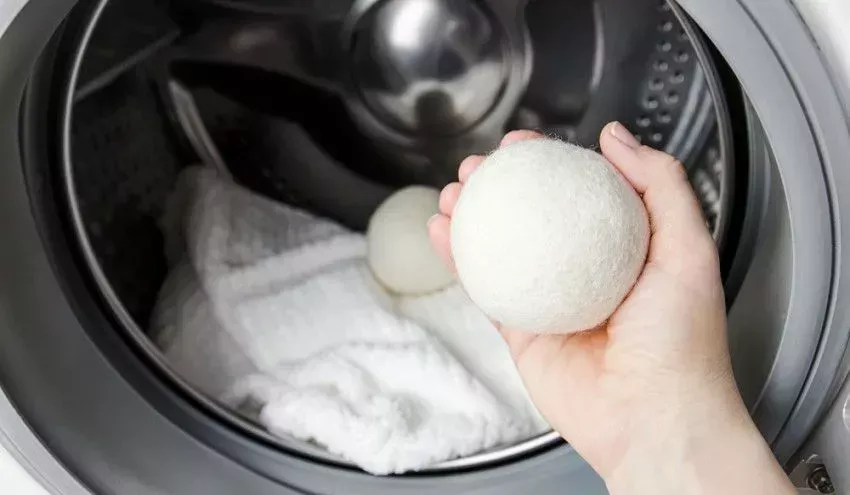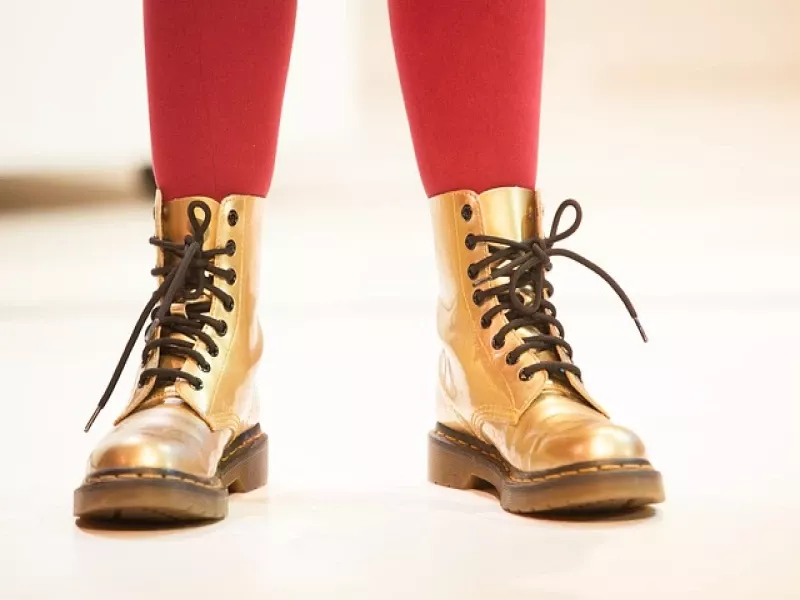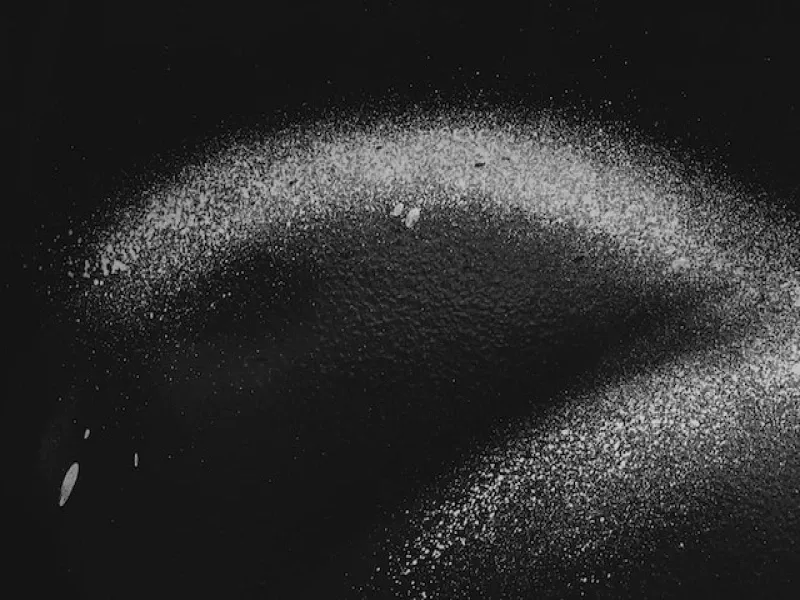
Here's how to get rid of static clothing: 20 Tips
It sometimes feels like you have nowhere safe when your clothes are static. You walk to the bathroom, touch the doorknob and immediately get a shock. Ouch! Wearing clothing that constantly jolts you is pretty annoying. In addition, when your clothing carries a large static charge it will stick to your body. Why do your clothes become static? And what is the reason garments become static more often in the winter?
In a moment, these questions will all be answered for you first. Then we'll give you 20 creative and practical solutions to the most important questions surrounding static clothing. With our collection of 20 tips against static clothing, you're guaranteed to find one or more solutions that you can get started with. We're going to talk about how to discharge static clothing but also how to prevent static clothing.
What causes clothes to become static?
Static electricity is an electrical charge on an object or person. It is a buildup of electrical voltage in poorly conducting fabrics. Clothing becomes static the moment electrons are given off or received from other materials when friction occurs. For example, you can think of when your sleeve is passed along an object made of plastic.
In discovering the causes, the first thing you need to look at is the material of your clothing. This is because synthetic fabrics become static much more easily than natural fibers. The weather also plays another important role: when the air is very dry, a garment will become static faster. Simply put, static clothing is caused by dryness and friction between different materials. In winter, you usually suffer more from this than in summer. This is because in winter we make our environment drier by using the heater, for example. This causes an electrical charge to build up faster.
Our tips
Now you’ve got a better understanding what causes clothes to become static in the first place it’s time to share our tips how to get rid of it!
Tip 1: Look carefully at the material of your clothing
Earlier in the blog, we mentioned that poorly conductive fabrics build up electricity faster and more. Poorly conductive fabrics refer to synthetic fabrics. By this we mean mainly clothing made of polyamide, acrylic and wool. When it is very dry outside, or inside the room you live or work in, it is better not to wear clothes made of these materials. It is better to choose clothes made of natural fibers. Therefore, when the humidity is very low, prefer clothes made of cotton or linen, for example.
Tip 2: Walk barefoot beforehand
Make sure when you just get out of bed that you walk around the house barefoot. Do this before you decide to change from your nightwear to the outfit you plan to wear. By walking around barefoot you reduce the static electricity your body collects. Your clothes are not likely to become static if you are not static yourself.
Tip 3: Change shoes
Did you know that walking on shoes with rubber soles gives you an electrical charge? With every step you take on a plastic floor, for example, you build up the electricity. To avoid this, it's better to wear shoes with leather soles. Leather soles do not suffer from this.
Tip 4: Get a metal clothes hanger
Is your clothing already static? For example, because it came out of the dryer like this? Then you can iron over the clothing with a metal hanger. This will rid the garment of the electrical charge. If your clothing is very static, like a wool sweater can be, you should also take a moment to pass the hanger along the inside. This way you can easily and quickly discharge your clothing from static electricity.
Tip 5: Touch grounded metal for a moment
By touching grounded metal you can discharge yourself from static electricity. For example, you can briefly hold a heating pipe or a metal fence with your hand. You will then temporarily stop receiving shocks. Make sure you are careful to make sure it is really grounded metal or else you will get the opposite effect: another shock.
Tip 6: Or touch a plant
If you don't know how to tell if something is made of grounded metal, you can also play it safe and touch a (real) plant. With this, too, you can rid yourself of a static charge.
Tip 7: Coat yourself with body lotion
Treat yourself to moisturized skin that you won't feel any shocks on! By smearing your body or at least your legs (and maybe your arms just to be sure) with body lotion you will counteract static electricity. This is because static electricity cannot coexist with moisture.
Tip 8: Increase humidity
As we just said in tip 7, static electricity cannot stand moisture. Static electricity occurs under dry conditions. This is because water conducts electrons very well. If there is enough moisture in the air then there is also less static electricity. The ideal humidity for the house is approximately between 40 and 60 percent. So if this is lower you can increase it with a humidifier or bowls of water on the radiator to reduce the chances of static charges on your clothes.
Tip 9: Hide a safety pin in your clothes
You can discharge static electricity from your clothing by touching metal. But what if you're not in a position to constantly look for grounded metal to touch? Then it's better to just keep this with you. Attach a metal safety pin to an inconspicuous spot on your clothing, such as on the inside. That way you won't have any more shocks when you touch a conductor.
Tip 10: A small splash of vinegar in the washing machine
To reduce or even completely remove static charge from your clothes, you can use vinegar. You add a small amount of natural vinegar to the washing machine and you're done. By the way, this works very well against neutralizing odors from your clothes!
Tip 11: Add fabric softener to laundry
Did you know that fabric softener also has an antistatic effect? If you don't use fabric softener yet, now is the time to start using it. Not only does it make your clothes soft and make them smell great; it is also an ideal way to get rid of static.
Tip 12: A little baking soda
As an alternative to vinegar or fabric softener, there is also baking soda. This is where you add a small scoop of it to the next wash with the washing machine.
Tip 13: Ball of aluminum foil in the washing machine
Place a small ball of aluminum foil - also known as silver foil - in the washing machine. This little ball will remove the static electricity caused on your clothes as a result of washing. This won't hurt the washing machine at all. Just make sure you smooth the ball well. You don't want your clothes to be damaged by any sharp edges.
Tip 14: Air dry instead of the dryer
The dryer is one of the biggest culprits in terms of making clothes static. You are better off air-drying clothes for this reason. So hang your clothes on a drying rack instead of using the dryer.
Tip 15: Tumble dry your clothes
If you do want to use the dryer, make sure you increase the humidity. This sounds like a counterproductive measure for a dryer but it really helps. You can do this by adding a damp washcloth during the last 10 minutes of the drying program. This makes the air less dry and therefore less electrical charge occurs. By the way, always remove your clothes from the dryer immediately: the longer you leave them sitting, the more likely they are to collect a large amount of static electricity.
Tip 16: Anti-static dryer cloth or dryer ball
If the dryer is unavoidable, we have a few more tips to make sure it doesn't make your clothes static. Adding an antistatic dryer sheet will work wonders. By the way, you can also use a dryer sheet outside the dryer by rubbing it directly over the inside and outside of a garment. As we mentioned earlier, static electricity on clothes is created not only by drying, but also friction. Adding a dryer ball reduces contact between the clothes inside the dryer. This also helps greatly in reducing static electricity on your clothes.
Tip 17: Water softener
Washing your clothes in ‘hard’ water, which contains a lot of calcium, can cause them to become static when they dry. Therefore, to ensure that your clothes do not get static in the washing machine, it is best to own a water ‘softener’, a device that de-calcifies the water.
Tip 18: Anti-static spray
If your clothes are already static, then you will have to do something about it to prevent shocks. If you notice that you often suffer from this on the road or in certain rooms, then you want to be able to solve this on the spot. You can then carry an antistatic spray with you in your bag. These special sprays nullify the static effect of clothing. Sprays are also available for fabric furniture, for example.
Tip 19: Spray hairspray
Don't currently have a specialist remedy at home such as antistatic spray, but do have a problem with static clothing? Spraying a little hairspray on your clothes can also get rid of it. Of course, you have to make sure you don't make the clothes dirty and sticky: therefore, keep the hairspray at least 30 centimeters away from your clothes.
Tip 20: Spray with water
No antistatic spray at home but no hairspray either? Then we have an alternative you can be sure to have. Water! Take a plant sprayer and fill it with normal water. Then spray a little water on the spots where your clothes stick to your skin. Again, keep enough distance; this time simply to avoid getting your clothes too damp or wet. To make this tip more effective, you can also add a very small amount of vinegar.
Read more
Curious about more fashion tips? Check out our other blogs!
- The history of sneakers
- How to care for your jeans
- Ankle boots for women for every day
- How to polish your shoes the right way
- How to combine flat shoes with a dress of skirt
- How to pair boots with a dress
- 10 helpful tips against sweating
Get inspired, compare and purchase clothes and shoes safely and easily online at Dressed.com.









